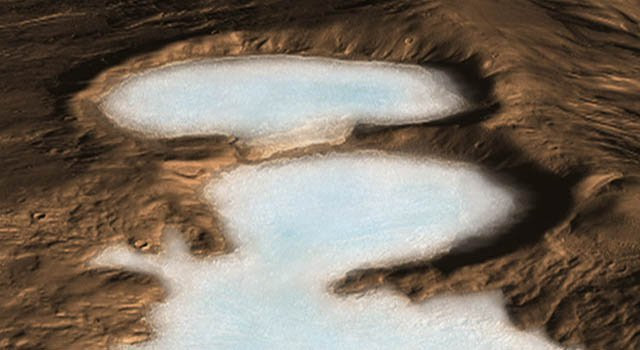Researchers have identified traces of an ancient glacier located near the equator of the planet Mars. The various Mars missions that have followed one another for several years have allowed us to affirm that water had been present on the Martian soil a very long time ago. Nowadays, Mars presents a dry and arid landscape, composed of numerous dunes and the presence of water is only attested by ice that can be observed at the poles.
These ice caps, which form seasonally, were considered the last evidence of water on the planet. But according to researchers from the Mars Institute and Seti Institute, water could also be stored as ice in the ground outside the polar regions. A team has discovered traces of an ancient glacier in an area near the equator, called Noctis Labyrinthus.
This area no longer contains visible ice, but it is characterized by the presence of sulphates that give the soil its light color and indicate the ancient presence of water. The surface of the soil also allows scientists to deduce the presence of moraines, sedimentary deposits typical of the presence of a glacier.
Based on these data and comparisons with those available on Earth, scientists estimate that the glacier that occupied this area was about six kilometers long and four kilometers wide, with a thickness of between 1.3 and 1.7 kilometers. The low number of crater impacts observed in this area suggests that the soil formation is relatively recent, likely dating to the last geological period of Mars, called the Amazonian Age.
These are the first observations to show evidence of a glacier so close to the equator, and they suggest that the presence of water on Mars was much greater than previously estimated. In a Seti Institute press release, the researchers suggest that ice may still be present under the sulphate layer, a feature that has been observed in the Altiplano salars in the Andes.
On Mars, the Noctis Labyrinthus region is known for its volcanic past and during eruptions, ashes and various volcanic materials would have been deposited on the surface of the glacier. The contact between the ice and these volcanic particles produces a chemical reaction that leads to the formation of sulphates. The latter would have formed a crust that took the shape of the glacier and whose traces are still visible.
If it is possible, the presence of underground water in the form of ice at the level of the equator must still be verified. A confirmation could have consequences on the next human explorations of Mars because it would become easier for future missions to extract water at the equator rather than braving the environmental conditions that characterize the Martian poles.




Comment here